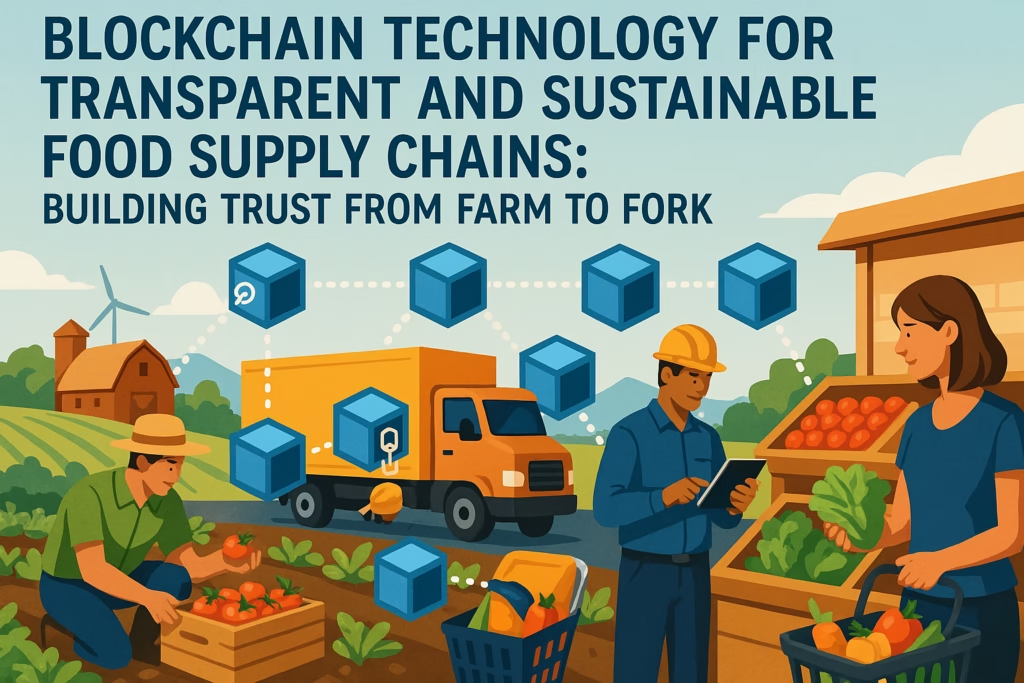Introduction
Modern food supply chains are complex, often global networks facing significant challenges related to transparency, traceability, food safety, and the verification of sustainability claims. Consumers increasingly demand information about where their food comes from, how it was produced, and its environmental and social impact. Blockchain technology, a decentralized and immutable digital ledger, offers a revolutionary approach to recording transactions and tracking assets within these supply chains. By providing a shared, secure, and transparent record of events, blockchain has the potential to fundamentally reshape food systems, fostering greater trust, accountability, and sustainability from the farm all the way to the consumer’s table. This article explores how blockchain technology can enhance the transparency and sustainability of food supply chains.

Key Blockchain Components and Applications in Food Supply Chains
Blockchain’s unique features enable powerful applications within the food sector:
- Decentralized Ledger: Instead of a single central database, the transaction ledger is distributed across many computers (nodes) in the network, making it resilient to single points of failure and tampering.
- Immutability: Once a transaction (e.g., transfer of ownership, quality check, temperature reading) is verified and added to the blockchain, it becomes virtually impossible to alter or delete, ensuring data integrity.
- Traceability and Provenance: Unique digital identities can be assigned to food products or batches. Each step in the supply chain (harvesting, processing, transport, storage) is recorded as a transaction on the blockchain, creating a verifiable digital trail of the product’s journey.
- Smart Contracts: These are self-executing contracts with the terms of the agreement directly written into code. They can automate processes like payments upon delivery confirmation, quality standard verification, or compliance checks, reducing friction and administrative overhead.
- Integration with IoT Sensors: Data from Internet of Things (IoT) devices (e.g., temperature sensors in transport, soil moisture sensors on farms) can be automatically recorded onto the blockchain, providing real-time, verifiable environmental or handling conditions.
Benefits of Blockchain in Food Supply Chains
Implementing blockchain technology offers significant advantages for creating more sustainable and trustworthy food systems:
- Enhanced Transparency and Traceability: Allows all authorized participants (farmers, processors, retailers, consumers) to access relevant parts of the supply chain record, verifying origin, handling, and certifications.
- Improved Food Safety: Enables rapid identification of the source and scope of contamination during food recalls, minimizing public health risks and economic losses.
- Reduced Food Fraud and Counterfeiting: Makes it significantly harder to introduce counterfeit products or misrepresent origin (e.g., falsely labelling conventional products as organic) due to the immutable record.
- Verification of Sustainability and Ethical Claims: Provides a robust mechanism to track and verify claims related to organic production, fair trade practices, carbon footprint, water usage, or animal welfare standards.
- Increased Efficiency and Reduced Waste: Streamlines documentation, reduces disputes through smart contracts, and potentially minimizes spoilage by providing better visibility into transit times and conditions.
- Building Consumer Trust: Empowers consumers with verifiable information about their food, fostering confidence in brands and production practices.
Challenges and Considerations
Despite its potential, the adoption of blockchain in food supply chains faces several hurdles:
- Scalability: Processing a high volume of transactions across complex, global supply chains can challenge the performance of some blockchain platforms.
- Interoperability: Ensuring seamless data exchange between different blockchain systems used by various partners and integrating with existing legacy IT systems remains a challenge.
- Cost of Implementation: Initial investment in technology, system integration, and training can be significant, particularly for small and medium-sized enterprises (SMEs) like smallholder farmers.
- Data Standardization and Governance: Requires agreement among supply chain partners on data formats, access rights, and governance rules for the blockchain network.
- Digital Divide and Input Accuracy: Requires reliable internet access and digital literacy among all participants. Crucially, the integrity of the blockchain relies on the accuracy of the initial data input (‘garbage in, garbage out’).
- Regulatory Environment: The legal and regulatory landscape surrounding blockchain applications is still evolving in many jurisdictions.
Future Trends
The application of blockchain in food supply chains is likely to evolve further:
- Integration with AI and Big Data Analytics: Combining blockchain data with AI for predictive analytics on supply chain risks, demand forecasting, and optimization.
- Tokenization: Representing physical goods, quality certificates, or sustainability credits as unique digital tokens on the blockchain.
- Hybrid Blockchain Models: Combining features of public and private blockchains to balance transparency with confidentiality needs.
- User-Friendly Interfaces: Development of simpler interfaces (e.g., QR code scans via smartphone apps) for easy consumer access to traceability information.
- Focus on Smallholder Inclusion: Efforts to develop cost-effective and accessible blockchain solutions for small farmers in developing countries.
Conclusion
Blockchain technology presents a powerful paradigm shift for food supply chains, offering unprecedented levels of transparency, traceability, and accountability. By creating a single, shared source of truth, it can effectively combat food fraud, enhance food safety, validate crucial sustainability claims, and ultimately rebuild consumer trust. While challenges related to scalability, cost, interoperability, and governance need to be addressed through collaboration and innovation, the potential of blockchain to contribute to a more resilient, equitable, and sustainable global food system is undeniable. Its responsible adoption marks a significant step towards a future where consumers can confidently know the story behind the food on their plates.
References:
- Kamble, S. S., Gunasekaran, A., & Sharma, R. (2020). “Modeling the blockchain enabled traceability in agriculture supply chain.” International Journal of Information Management, 52, 101967. (Discusses transparency, traceability, and trust aspects).
- Feng, H., Wang, X., Duan, Y., Zhang, J., & Zhang, X. (2020). “Applying blockchain technology to improve agri-food traceability: A review of development methods, benefits and challenges.” Journal of Cleaner Production, 260, 121031. (Covers immutability, traceability benefits, and challenges including food safety).
- Galvez, J. F., Mejuto, J. C., & Simal-Gandara, J. (2018). “Future challenges on the use of blockchain for food traceability analysis.” TrAC Trends in Analytical Chemistry, 107, 222-232. (Focuses specifically on traceability applications and future directions).
- Kshetri, N. (2018). “1 Blockchain’s roles in meeting key supply chain management objectives.” International Journal of Information Management, 39, 80-89. (Discusses blockchain features like smart contracts and their role in reducing fraud and improving efficiency).
- Saberi, S., Kouhizadeh, M., Sarkis, J., & Shen, L. (2018). “Blockchain technology and its relationships to sustainable supply chain management.” International Journal of Production Research, 57(7), 2117-2135. (Explores the link between blockchain capabilities and various dimensions of sustainability in supply chains).
- Kamilaris, A., Fonts, A., & Prenafeta-Boldú, F. X. (2019). “The rise of blockchain technology in agriculture and food supply chains.” Trends in Food Science & Technology, 91, 640-652. (Provides a good overview of applications and highlights key challenges like standardization, cost, and data input accuracy).
If you want to learn more about Blockchain in agriculture, check out Agri AI : Smart Farming Advisor and feel free to ask any questions!

Leave a Reply